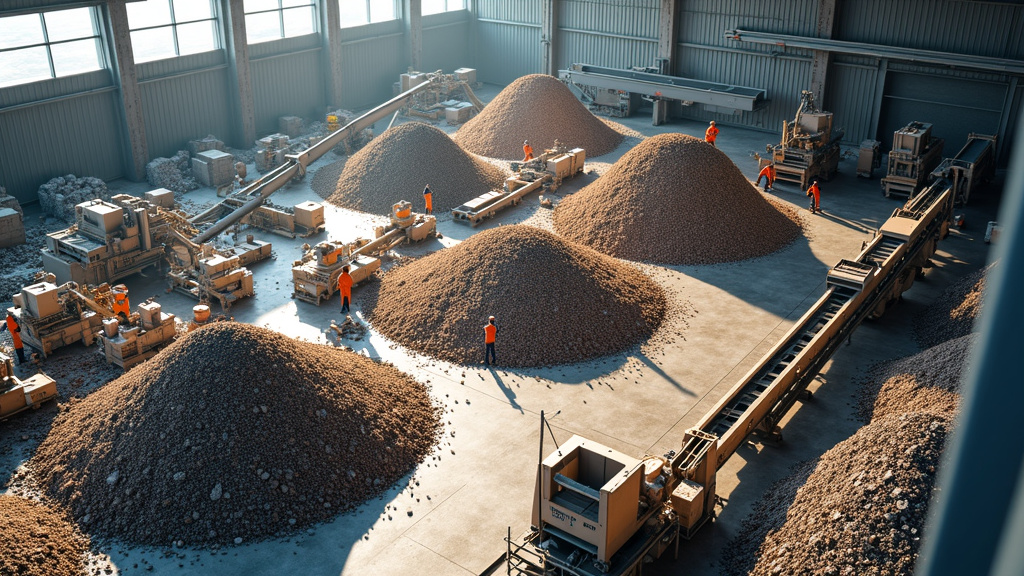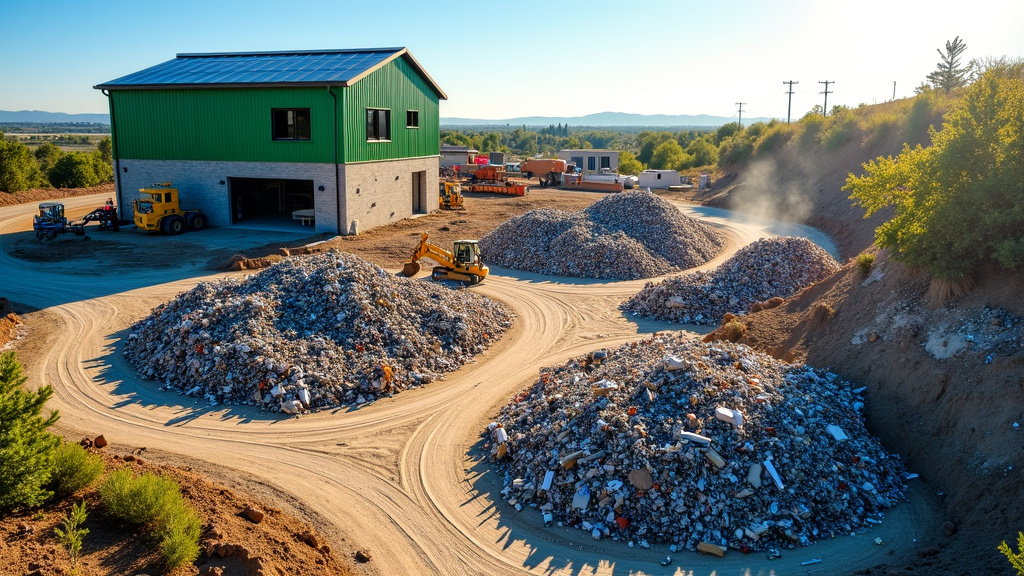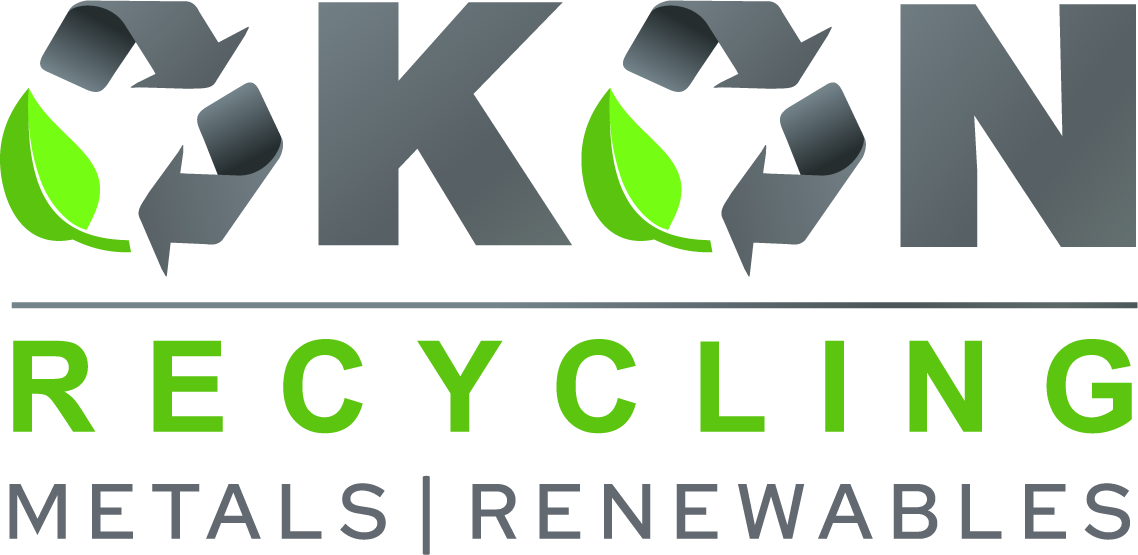5901 Botham Jean Blvd, Dallas, TX 75215
A Quick Guide to Recycling Mixed Construction Debris
February 11, 2025Did you know that the construction industry generates over 600 million tons of debris every year in the United States alone? That’s enough waste to fill 400,000 Olympic-sized swimming pools.
As our cities expand and infrastructure projects multiply, the question of what to do with this mounting debris has become ever more pressing. Forward-thinking waste processors—like Okon Recycling—are helping to meet this challenge by transforming mixed construction debris into valuable resources and ushering in a new era of sustainable construction practices.
There’s just one question:
What is Mixed Construction Debris?
Picture the aftermath of a demolition or the remnants from a new build—a jumble of concrete chunks, twisted metal, broken wood, and crumbled drywall. Traditionally, this medley of materials would head straight to the landfill, consuming precious space and risking the release of harmful substances into the environment. Thanks to innovative recycling methods, however, these mixed materials are finding new life instead of going to waste.
The concept is straightforward yet transformative: separate different materials and repurpose them. Durable concrete can be crushed for road construction aggregate, metal scraps can be melted and recast into new building components, and wood waste can become mulch or biomass fuel. This practice not only prevents debris from clogging landfills but also cuts down on the use of virgin resources in future projects.
The environmental benefits are clear. Yet, the economic advantages of construction debris recycling are just as significant. According to the U.S. Environmental Protection Agency, recycling construction and demolition materials can create 20% more jobs than simply dumping them in landfills. Many contractors also discover that recycling is cost-effective—especially in regions with high landfill tipping fees.
In the sections that follow, we’ll dive deeper into mixed construction debris recycling and explore the cutting-edge technologies making it possible.
Effective Strategies for Recycling Construction Debris

The construction industry generates massive amounts of waste annually, posing significant environmental challenges. However, implementing effective recycling strategies can drastically reduce the industry’s environmental footprint while conserving valuable resources.
Here are some key approaches enhancing construction debris recycling.
The Power of Source Separation
Source separation is the cornerstone of successful construction debris recycling. This process involves categorizing materials directly at the construction or demolition site, significantly enhancing the efficiency of subsequent recycling efforts. By keeping different types of waste separate from the outset, we can maintain the quality and recyclability of materials, opening up more opportunities for high-value recycling.
For instance, separating concrete from wood waste prevents contamination, allowing each material to be processed more effectively. This practice not only improves recycling rates but also reduces the costs associated with sorting mixed waste later in the process.
Investing in Advanced Sorting Technologies
While source separation lays the groundwork, investing in cutting-edge sorting technologies can elevate construction debris recycling. Manual pick lines, where workers hand-sort materials on conveyor belts, remain effective for smaller operations. However, for larger-scale projects, automated systems are becoming increasingly prevalent.
Trommel screens, for example, are cylindrical sieves that efficiently separate materials based on size. These machines can process large volumes of mixed debris, separating finer particles from larger chunks, thereby streamlining the recycling process. Advanced robotic sorting systems equipped with artificial intelligence and machine vision are also making waves in the industry, offering unprecedented accuracy and speed in identifying and separating different types of construction waste.
Collaboration with Waste Management Services
Partnering with reliable waste management services is crucial for ensuring that recycled materials find their way to appropriate processing facilities. These partnerships can provide valuable expertise in navigating local regulations, identifying recycling opportunities, and implementing best practices for waste handling.
Moreover, professional waste management services often have access to a wider network of recycling facilities, increasing the chances of finding appropriate destinations for various types of construction debris. This collaboration can lead to higher recycling rates and more sustainable outcomes for construction projects.
Successful Implementation: A Case Study
The renovation of the Ridgehaven Office Building in San Diego serves as an inspiring example of effective construction debris recycling. The project team implemented a comprehensive waste management plan that included:
- Rigorous source separation protocols
- On-site sorting of materials
- Partnerships with local recycling facilities
As a result, the project achieved a remarkable 51% waste diversion rate, saving over $93,000 in disposal costs and significantly reducing its environmental impact.
Actionable Steps for Improved Construction Debris Recycling
- Develop a detailed waste management plan before starting your project
- Train all personnel on proper waste separation techniques
- Invest in appropriate sorting equipment based on your project’s scale
- Establish partnerships with local recycling facilities and waste management services
- Regularly monitor and report on recycling rates to identify areas for improvement
By implementing these strategies, construction companies can significantly reduce their environmental impact, cut costs, and contribute to a more sustainable future for the industry. Remember, every piece of debris diverted from landfills is a step towards a cleaner, greener planet.
For more information on how you can implement effective construction debris recycling strategies in your projects, contact Okon Recycling at 214-736-9509. Our team of experts is ready to help you transform your waste management practices and contribute to a more sustainable construction industry.
Conclusion: Embracing Recycling in Construction

The construction industry is at a pivotal point where embracing recycling practices is no longer optional—it’s essential. By integrating efficient recycling methods, builders and developers conserve finite resources while cutting project costs. This isn’t just about environmental responsibility; it’s about employing smart, forward-looking business strategies that benefit everyone involved.
Leading the way is Okon Recycling, demonstrating that sustainability and profitability can coexist. Through processing millions of tons of recyclable materials, they transform once-discarded construction debris into valuable resources, proving that innovative recycling approaches make strong economic sense.
The impact of these sustainable measures goes far beyond the job site. From reducing landfill loads and cutting carbon emissions to preserving natural habitats, the benefits reach into every community. It’s a ripple effect, impacting everything from the air we breathe to the neighborhoods we build.
Looking ahead, technology continues to improve recycling efficiency and accessibility—AI-driven sorting systems and advanced material recovery processes promise to further revolutionize waste management. Still, technology alone can’t achieve full-scale change. True progress requires a collective effort, uniting builders, suppliers, policymakers, and communities under a shared vision of sustainability.
Recycling in construction is more than a fleeting trend—it’s the cornerstone of a truly sustainable future. Every reclaimed beam and repurposed material helps create an industry that enhances, rather than depletes, our environment. Although challenges remain, the opportunities are too great to ignore.
Ready to make a lasting impact on your projects and our planet? Contact Okon Recycling at 214-426-6566. By working together, we can transform the way we build—one recycled resource at a time.
